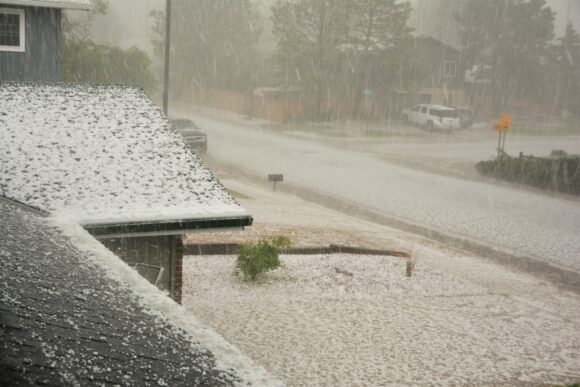In recent months, the Wall Street Journal has published long articles regarding how expensive—to the point of not being affordable—homeowners and auto insurance have become. Insurance companies should not be so confident that raising rates significantly is a one-sided positive approach to increasing profitability as if there are no offsetting costs.
The first question to ask is whether such significant rate increases are even required and then, if so, why. Property and casualty insurance companies made a record $89 billion in 2023.
(Editor’s Note: As of press time, the U.S. property/casualty insurance industry reported a 2024 net income of $170 billion, according to a joint report from Verisk and The American Property Casualty Insurance Association.)
On the surface, record profits do not indicate the need to raise rates by double digits year after year after year.
For example, a homeowners policy that has increased 300% in four years indicates a level of incompetency that should result in multiple executive firings. Let’s assume that the carrier’s homeowners combined ratio over the last five years in the state is 110% (which it is). Over five years, on $100 million in premium, they have lost $100 million—not a small amount. On that level alone, someone needs to be fired.
Before jumping to the conclusion that no one should be fired for losses out of their control, the point of insurance executive management is to price, forecast, and manage for losses out of their control. Modern insurance was invented to primarily manage for Acts of God on the High Seas in the days of sails and no communication, no rescue, and no knowledge of why some ship never made its destination. They made money, even without fancy computer models, much less expensive weather models.
Global warming is not to blame either. It’s a human failure.
Bad Decisions
I’ll use my home state of Colorado as an example. In 1992, the Denver metro area had its largest hailstorm in history and the property insurance market froze. The losses and damage were enormous. I did a study at that time of all the hailstorms recorded since 1900 in Colorado. Nearly 100% of all damaging hailstorms occurred east of the Rocky Mountains running from the Front Range to the Kansas border, from Wyoming to New Mexico. In other words, damaging hail has always been a problem in the Denver metro area. It’s just that not very many people used to live there.
Additionally, the actuaries and the insurance executives made really bad analyses and decisions. Going back to 1900, hailstorms are inevitable. Actuarial models are not even necessary to know that hail losses are inevitable in Denver, Colorado. However, following that massive hailstorm, Denver didn’t really have any major hailstorms for the next 15 years or so. I witnessed several carriers who never previously wrote in Colorado come to the state because it was economically booming. And for some reason, actuaries made the almost fatal mistake of introducing recency bias into their pricing models.
There had not been a major hail event for a long time, and none of the new carriers employed people with memories of what happened. Give or take, archeological evidence and psychological studies prove people lose applicable knowledge of catastrophic losses in 15 to 25 years. In other words, they rebuild in a flood plain after a massive flood if another flood does not happen for 20 years. It’s a recency bias. Pricing assuming the future would have minimal hailstorms because the last 15 years had no major hailstorms even though the prior 100 years showed regular hailstorms is a recency bias. I don’t recall anyone doing any detailed studies of permanent weather pattern changes. Instead, they did poor work.
It could be that adequate historic data did not exist in very specific ZIP codes because 20 years ago, virtually no one lived in those ZIP codes, but that suggests the lack of common sense.
Or maybe the executives overrode the actuaries’ recommendations. I have seen that happen. Regardless, someone screwed up, but climate change is a convenient excuse—especially if the person who should be fired is the one offering the excuses.
Or maybe someone simply forgot the importance of geographic dispersion. This is so easy to achieve with technology, but greed almost certainly took precedence with underwriting managers not paying attention given the lack of recent hailstorms.
Or maybe the product development people should have realized that pricing a 25-year-old roof in a hail zone should carry a higher price/higher deductible much earlier than they did. It’s not rocket science, and such a failure suggests another person to be fired.
Or maybe the convoluted and oxymoronic logic of, “But if we charged the right rate, we would never have written any business in Colorado!” might be the driver. Executives with this logic should not leave the mail room.
Today, almost no one wants to write homeowners insurance along the Front Range of Colorado and rates are at the breaking point for consumers.
But going back to the initial example. Take $100 million and triple the premium to $300 million. If the combined ratio is 110% at $100 million, then at $300 million, the combined ratio is 37%. Tripling of the premiums is not justified.
If a carrier claims it is justified, ask for proof and don’t let them slide. Because if it really is justified, odds are pretty high they have deeper problems such as maybe a severe under-reserving issue. This particular carrier has a long history of under-reserving by 5% annually and about 30% over the lifetime. In other words, their incompetency has created a reserving hole, and they need all that extra money to fill their deficiency.
Or maybe the carrier is out of operational surplus and really what they want to achieve is to cause accounts to leave so their surplus increases as a percentage of premiums. This carrier has achieved this goal over the last five years with minimal premium growth but material surplus growth.
Executive Incompetency
Allowing executive incompetency is not a good strategy. And the repercussions will last a long time. As I’ve recently shown in other articles, standard admitted carriers mostly write adverse commercial business as it is because they’re only writing about 20-25% of all premiums. Commercial clients are already self-insuring a huge portion of their risks whether directly or through alternative vehicles such as captives. They had left a lot of their property exposures in the traditional market, but carriers are driving them out.
The more everyone learns about alternative markets or simply decides to self-insure—and I’m seeing people self-insure their homes (and the Wall Street Journal reported on this same trend)—the more people will not return to the market. While state regulators seem to have bought into carriers needing higher rates, these actions just give politicians more reasons to hate insurance companies, making life even more difficult. This is one reason the surplus lines market is growing so quickly.
With rates so high in the traditional market, people will find alternatives—and they’re not coming back. This means too many regular insurance companies will exist and probably at least 25% need to be eliminated. The ones that should be eliminated first are the ones run by executives that should have already been fired. Because the problem is not hail or global warming—it’s executive-level incompetence resulting in price gouging with premiums tripling in five years.
Was this article valuable?
Here are more articles you may enjoy.



 Trump’s Trade War Is Making US Farmers Anxious About Demand Risk
Trump’s Trade War Is Making US Farmers Anxious About Demand Risk  White House Seeks to Bring Financial Regulators Under Its Sway
White House Seeks to Bring Financial Regulators Under Its Sway  Pet Insurance, Agents Gets a Shorter Leash Under Bill DeSantis Signed Into Law
Pet Insurance, Agents Gets a Shorter Leash Under Bill DeSantis Signed Into Law  Allstate Agent Can Be Sued Over Nonrenewal of ‘Grandfathered’ Flood Insurance Policy
Allstate Agent Can Be Sued Over Nonrenewal of ‘Grandfathered’ Flood Insurance Policy 



